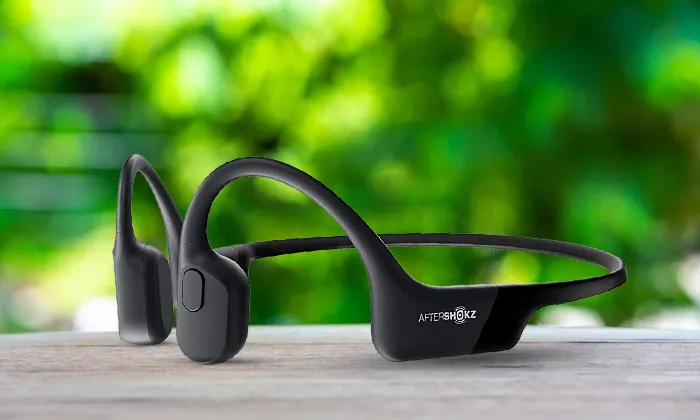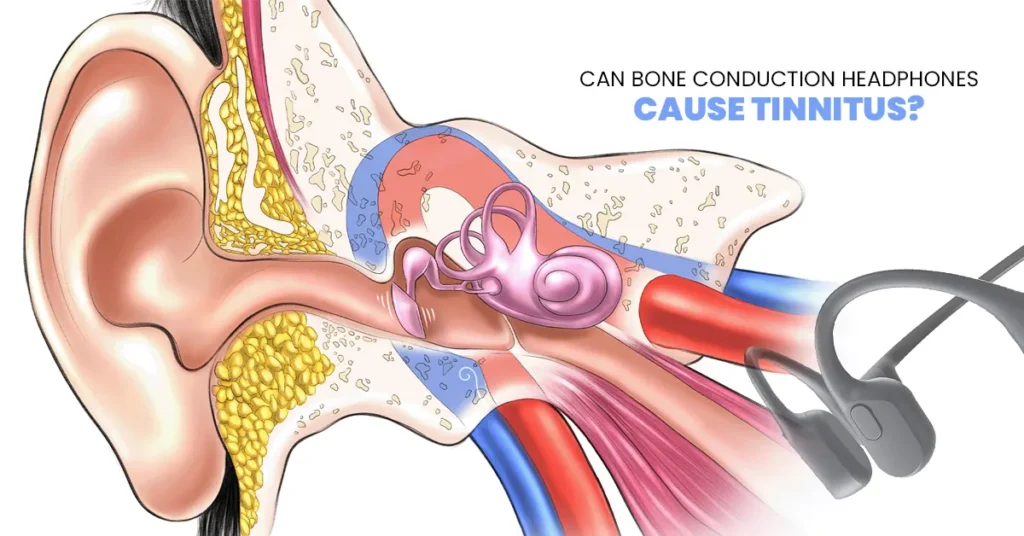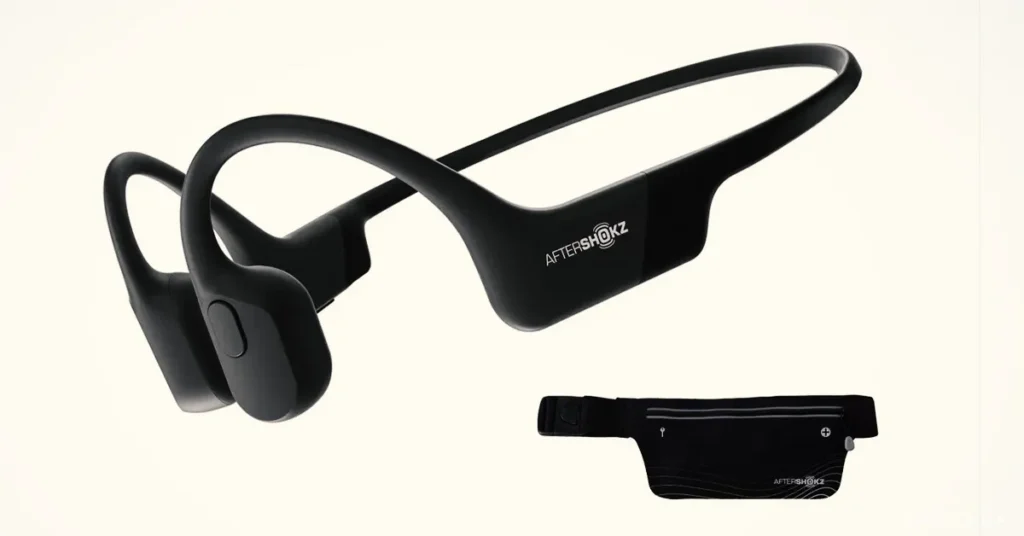Bone conduction headphones are the newest innovation in the world of audio technology, allowing you to listen to music and take phone calls without completely blocking out the sounds of the world around you.
However, with all new technologies comes the question of potential side effects. While many people believe that bone-conduction headphones are completely safe for your ears and cannot cause any side effects, this is not entirely True.
In fact, bone conduction headphones can have several potential side effects that users need to be aware of, such as discomfort or pressure, sound leakage, tinnitus aggravation, limited audio quality, headaches, vertigo or dizziness, and skin irritation.
Despite these potential side effects, there are also many misconceptions surrounding bone-conduction headphones. Some believe that they are only for people with hearing loss, or that they can cure hearing loss altogether.
Others think that they deliver the same audio quality as traditional headphones, or that they cannot cause any side effects at all.
In reality, bone-conduction headphones are not a universal solution, and they require careful consideration before use.
So, how do you choose the right bone-conduction headphones? There are several popular brands and models to choose from, each with its own unique features and benefits. By understanding the potential side effects and safe usage guidelines, you can make an informed decision and choose the right headphones for your needs.
Stay tuned as we dive deeper into the fascinating world of bone conduction technology and unveil the truth about its side effects and benefits.

Potential Side Effects of Bone-Conduction Headphones
It’s important to be informed of any potential adverse effects before experimenting with bone-conduction headphones. These headphones provide a distinctive listening experience, although they are not without flaws. Let’s look more closely at the potential negative effects:
- Discomfort or Pressure
- Sound Leakage
- Tinnitus Aggravation
- Ear Fatigue
- Limited Audio Quality
- Reduced Bass Response
- Headaches
- Vertigo or Dizziness
- Skin Irritation
- Environmental Interference
Discomfort or Pressure
Some users may experience a sensation of discomfort or pressure when wearing bone-conduction headphones. This can be attributed to the contact between the transducers and the bones around the ears. It’s important to find a proper fit and adjust the headphones to alleviate any discomfort.
Sound Leakage
Bone conduction headphones, due to their design, may exhibit sound leakage. As sound is transmitted through vibrations in the bones, it is possible for others in close proximity to hear what you’re listening to, especially at higher volume levels.
This can potentially compromise your privacy or disrupt the surrounding environment. It’s important to be mindful of this aspect and adjust the volume accordingly, especially in public settings where noise leakage may cause inconvenience or disturb others.

Tinnitus Aggravation
For some individuals who already experience tinnitus, the use of bone-conduction headphones may aggravate their symptoms. Tinnitus is characterized by persistent ringing, buzzing, or other phantom sounds in the ears.
The direct stimulation of the bones around the ears can potentially intensify the perception of these sounds. If you have pre-existing tinnitus, it’s advisable to exercise caution and consult with a healthcare professional before using bone-conduction headphones.
They can provide personalized guidance based on your specific condition and help you make an informed decision regarding their usage.
Ear Fatigue
Prolonged use of bone-conduction headphones can lead to ear fatigue, especially for individuals who are not accustomed to this type of technology.
The continuous contact and vibrations on the bones around the ears can cause a sense of fatigue or strain over time.
This can manifest as discomfort, soreness, or a feeling of heaviness in the ears. It’s important to take regular breaks from wearing bone-conduction headphones, allowing your ears to rest and recover.
Limited Audio Quality
One of the trade-offs of bone conduction headphones is that they typically offer a more limited audio quality compared to traditional headphones.
This is primarily because sound is transmitted through vibrations in the bones rather than directly into the ear canal. The bypassing of the ear canal can result in a loss of certain sound frequencies and a reduction in overall audio fidelity.
Reduced Bass Response
The bass response, in particular, may be less pronounced compared to traditional headphones, impacting the depth and richness of low-frequency sounds.
While advancements have been made to enhance the audio experience of bone-conduction headphones, it’s important to set realistic expectations regarding their audio performance.
It’s worth considering the primary use case and whether the benefits of bone conduction technology outweigh the potential compromise in audio quality for your specific needs and preferences.

Headaches
It’s important to note that prolonged use of bone-conduction headphones, particularly at high volume levels, can sometimes lead to headaches for certain individuals.
The continuous vibrations and pressure exerted on the bones around the ears may cause discomfort or tension, resulting in headache symptoms. Factors such as sensitivity to vibrations or prolonged exposure to the vibrations may contribute to this side effect.
Vertigo or Dizziness
In rare cases, some individuals may experience sensations of vertigo or dizziness when using bone-conduction headphones.
This can be attributed to the direct stimulation of the vestibular system, which is responsible for balance and spatial orientation. The vibrations transmitted through the bones may disrupt the normal equilibrium, leading to feelings of imbalance or dizziness.
If you experience such symptoms, it’s advisable to discontinue using the headphones and consult a healthcare professional for further evaluation.
Skin Irritation
Some individuals may experience skin irritation when using bone-conduction headphones. The placement of these headphones on the cheekbones or temples, coupled with prolonged friction or pressure, can lead to redness, itching, or discomfort on the skin.
This can be particularly relevant for those with sensitive skin or individuals who wear headphones for extended periods.
Environmental Interference
Bone conduction technology relies on vibrations that pass through the bones and then reach the cochlea, bypassing the ear canal.
However, external factors such as ambient noise, vibrations from the environment, or physical movements can interfere with the transmission of sound, potentially affecting the overall audio experience.

Misconceptions about Bone Conduction Headphones
When it comes to bone-conduction headphones, there are several common misconceptions that need to be addressed. Let’s debunk these myths and set the record straight:
They Are Completely Safe for Your Ears
While bone-conduction headphones are generally considered safe for most individuals, it’s important to acknowledge that they are not without potential side effects.
As we have explored earlier, discomfort, sound leakage, tinnitus aggravation, limited audio quality, headaches, vertigo or dizziness, and skin irritation can occur in some cases.
Cannot Cause Any Side Effects
Contrary to the belief that bone conduction headphones are side-effect-free, it’s essential to recognize that they can indeed cause various side effects.
The direct contact and vibrations on the bones can lead to discomfort, tinnitus aggravation, and skin irritation, among other issues.
These side effects may vary in severity and occurrence depending on individual factors, such as sensitivity and duration of use.
They Are Only for People with Hearing Loss
Another misconception surrounding bone conduction headphones is that they are exclusively meant for individuals with hearing loss.
While bone conduction technology can certainly benefit those with certain types of hearing loss, such as conductive hearing loss, they are not limited to this specific group.
Bone conduction headphones offer unique advantages, such as maintaining situational awareness and reducing ear canal blockage, making them suitable for a broader range of users who prioritize these features.
Deliver the Same Audio Quality as Traditional Headphones
It’s important to understand that bone-conduction headphones generally provide a different audio experience compared to traditional headphones.
Due to the nature of sound transmission through vibrations in the bones, the audio quality may be limited, particularly in terms of bass response.
It’s crucial to set realistic expectations and recognize that bone conduction headphones prioritize certain benefits, such as open-ear listening and environmental awareness, over audio fidelity.
Can Cure Hearing Loss
While bone-conduction headphones can assist individuals with specific types of hearing loss, it is important to dispel the notion that they can cure hearing loss entirely.
Hearing loss is a complex medical condition that may require professional assessment, diagnosis, and appropriate treatment by qualified healthcare providers.
Bone conduction headphones can augment hearing capabilities in certain situations, but they are not a panacea for all types of hearing loss.
They Are Only Suitable for Outdoor Activities
While bone-conduction headphones are often associated with outdoor activities, such as running or cycling, they are not limited to these scenarios.
While their open-ear design makes them particularly useful for maintaining situational awareness in outdoor environments, they can be equally beneficial for indoor use.
Whether you’re working, studying, or engaging in other daily activities, bone-conduction headphones can offer a unique listening experience while allowing you to stay connected to your surroundings.
Safe Usage Guidelines for Bone Conduction Headphones
To ensure a safe and enjoyable experience with bone-conduction headphones, it’s important to follow these usage guidelines:
Maintain Moderate Volume Levels
Avoid listening at excessively high volume levels to prevent potential hearing damage. Set the volume to a comfortable level that allows you to hear your audio clearly without causing discomfort or risking long-term hearing impairment.
Take Breaks During Extended Use
Give your ears periodic breaks when using bone-conduction headphones for extended periods. Continuous and prolonged usage can lead to ear fatigue and discomfort.
Take short breaks to rest your ears and prevent any potential strain or irritation.
Choose the Right Fit and Model
Select bone-conduction headphones that fit securely and comfortably on your cheekbones or temples. It’s important to choose a model that suits the shape and size of your head to ensure proper contact and optimal audio transmission.
Keep Your Headphones Clean
Regularly clean your bone conduction headphones to maintain hygiene and prevent any buildup of dirt or sweat. Follow the manufacturer’s instructions for cleaning and ensure that the headphones are dry before using them again.
Monitor Your Symptoms
Pay attention to any discomfort, irritation, or changes in hearing while using bone-conduction headphones. If you experience persistent pain, skin irritation, or worsening of existing conditions like tinnitus, discontinue use and consult a healthcare professional for further evaluation.
By following these safe usage guidelines, you can enjoy the benefits of bone-conduction headphones while minimizing the chances of adverse effects.
Remember to prioritize your comfort, maintain awareness of your surroundings, and prioritize your hearing health when using this innovative audio technology.
How to Choose the Right Bone Conduction Headphones?
When selecting bone-conduction headphones, consider the following factors to ensure you choose the right ones for your needs:
Comfort and Fit
Look for headphones that offer a comfortable and secure fit. They should sit snugly on your cheekbones or temples without causing discomfort or pressure.
Adjustable features and different sizes of earpieces or headbands can contribute to finding the right fit for your unique head shape and size.
Audio Quality
While bone conduction technology inherently has certain limitations in audio quality compared to traditional headphones, you should still prioritize headphones that provide a clear and well-balanced sound.
Consider user reviews and professional audio evaluations to gain insights into the audio performance of different models.
Durability and Build Quality
Opt for headphones that are well-built and durable, capable of withstanding daily use and potential impacts.
Look for materials that are resistant to sweat, moisture, and general wear and tear. This ensures that your headphones can withstand various environments and activities.
Battery Life and Charging
Consider the battery life of the headphones, especially if you plan to use them for extended periods. Look for headphones that offer sufficient battery capacity for your needs and consider how they charge (e.g., USB, wireless charging). Quick charging features can also be advantageous for convenience.
Connectivity and Compatibility
Check the connectivity options of the headphones. Some models offer Bluetooth connectivity, allowing you to wirelessly connect to your devices.
Ensure that the headphones are compatible with the devices you intend to use, such as smartphones, tablets, or computers.
Additional Features
Explore any additional features that may enhance your experience. This could include features like water resistance, noise-canceling capabilities, built-in microphones for hands-free calls, or intuitive control buttons for easy operation.
Price and Value
Consider your budget and the value you expect from the headphones. Compare different models based on their features, quality, and customer reviews to find the right balance between price and performance.
Warranty and Customer Support
Look for headphones that come with a warranty to protect against any potential manufacturing defects. Additionally, consider the reputation of the manufacturer and their customer support services in case you encounter any issues or require assistance.

Some Popular Bone Conduction Headphones
When it comes to choosing bone-conduction headphones, there are several top-rated options available in the market. Here are a few popular choices:
AfterShokz Aeropex
The AfterShokz Aeropex is highly regarded for its superior sound quality, comfort, and lightweight design. It offers excellent bone conduction technology and delivers impressive audio performance, making it a top choice for many users.
Vidonn F1 Titanium
The Vidonn F1 Titanium is known for its durability and comfortable fit. It features a titanium wraparound headband that provides a secure fit during various activities. With good sound quality and reasonable pricing, it’s a popular option among users.
OpenMove by AfterShokz
The OpenMove is an affordable and versatile option that offers a great balance of sound quality and comfort. It features PremiumPitch 2.0 technology for enhanced audio performance and supports Bluetooth connectivity for wireless convenience.
Bose Frames Tempo
Bose Frames Tempo is a unique combination of sunglasses and bone-conduction headphones. They offer excellent audio quality, rugged construction, and an open-ear design suitable for outdoor activities. These headphones also provide UV protection and are water and sweat-resistant.
Remember that the “best” headphones can vary depending on individual preferences and requirements. It’s advisable to read user reviews, compare features, and consider your specific needs to choose the bone-conduction headphones that best align with your expectations and usage scenarios.
Final Thoughts
Bone conduction headphones can provide a unique and innovative listening experience. However, as with any technology, there are potential side effects and misconceptions that should be taken into consideration.
It is important to understand the limitations and benefits of bone-conduction headphones, as well as follow safe usage guidelines and choose the right model for your needs.
With proper care and attention, bone-conduction headphones can offer a comfortable and enjoyable listening experience without sacrificing your health. So, make an informed decision and enjoy your music in a safe and healthy way!
- Charging Bluetooth Headphones During Use: Is It Possible? - January 9, 2024
- Why Over-Ear Headphones Best for Hearing Health? (7 Reasons) - December 12, 2023
- Fixing the Bose Earbuds Not Charging in Case Problem: Solutions That Work - November 24, 2023
